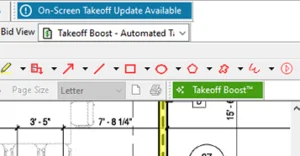Let’s face it, the ebb and flow of construction work mean that projects will overlap and intersect. Crews and equipment will—at times—be spread thin. On the one hand, it’s the nature of the beast. On the other hand, it’s not always smart to view each project as separate—especially if your project backlog is shrinking
In boom or bust times, contractors may skip or give a cursory look at the fine details of a project just completed because they’re too busy looking for the next construction job. But without a consistent post-project review system, your construction business—whether it’s drywall or roofing—could end up making the same mistakes again.
It is critical to apply lessons learned from one job to the next so you can build on your construction knowledge and make critical adjustments to projects in progress. This is especially true when projects are pushed, put on hold, or outright canceled due to a changing economic landscape.
How to Make Every Project Profitable
Let’s say you’re a concrete subcontractor specializing in decorative concrete. Even though you’re focused on delivering quality and expertise, you fail to complete each job with a profit and loss (P&L) statement. A P&L statement is essential if you want to close the loop—from the office to the field and back again. This helps you make sure the job you just finished is as profitable as the next one.
One way to do this more easily is with user-friendly software. When contractors use tools to track progress against their original estimate, they can more accurately predict just how long it will take to complete the next job. Tools like On-Screen Takeoff can help you get a jump on that next job by saving your historical calculations.
When you use software to track your productivity, you can more easily see how cost overruns and project delays impact profits. In addition, cloud-based software applications can improve communications and ensure that crew members are no longer tied to one server back at the office.
How to Have a Strong Post-Project Strategy
Consider how a strong post-project strategy can boost your reputation with construction clients. Why not wrap up a project by meeting one-on-one with your client to discuss the job just completed? This allows your business to document just how well expectations were met from the customer’s vantage and gauge their overall satisfaction.
Combine the customer’s feedback with the notes gathered in the internal post-project review. Be sure to include senior managers, estimators, project managers, the superintendent, the job foreman, and the director of operations. Allowing them to provide feedback will help you evaluate everything from job safety to project scheduling.
Here are more recommendations for contractors to build a strong post-project strategy:
- Compare your actual costs to your budget
- Make sure your estimator receives positive or corrective feedback from the project management group for future bids
- Capture before, during, and after photos to illustrate what worked and didn’t work
- Spend time reviewing with crew members, the estimator, project manager, and administrators all pertinent aspects of the project, change orders, and bid to final costs
- Take lots of digital pictures and notes from your team lead to create a top 10 strength’s story and to identify your top 10 weaknesses
Apply Takeaways to Your Next Project
It’s not easy to keep clients happy from start to finish. Do you tend to pour your focus into the next job without wrapping up the last one? Do you have a thorough review built into your closing process? Applying post-project takeaways from one job to the next can only strengthen your process for future bids and projects.
Even in tough times, it is easy to get caught up trying to win lots of jobs to compensate—without taking a step back to assess why you are bidding those jobs. Don’t let estimating challenges overwhelm your efforts.
If you’re ready to take the next step to make every project more profitable, sign-up for a 14-day, risk-free trial of On-Screen Takeoff now.



